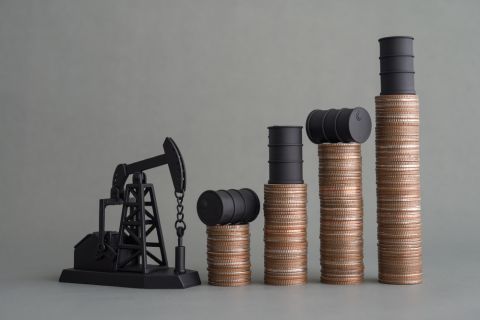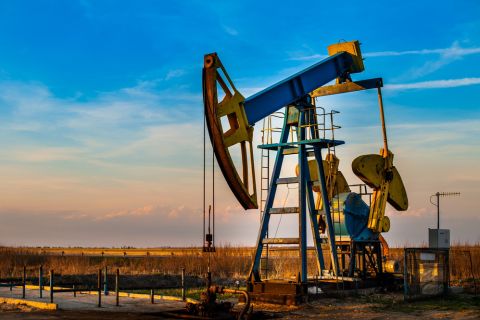The sting of the latest downturn that hit the oil and gas industry is still being felt, but the condition of the industry—specifically in Texas—has improved, according to the Texas Alliance of Energy Producers.
The alliance, a more than 3,350-member group that represents the interests of the industry at the state and federal levels, gauges the condition of the industry with a composite index called the Texas Petro Index (TPI). Created by economist Karr Ingham, the TPI is based on several upstream economic indicators, which include production volumes, prices, rig counts, completions, drilling permits and employment.
In a news release issued April 19, the alliance said the TPI rose for a fourth consecutive month, coming in at 160.4 in March, which is still about 5.6% less than a year ago.
Higher oil and gas prices, increased drilling activity, a rise in the number of drilling permits issued and gains in the value of oil and gas production in the state all contributed to the rising index. Although the increase represents an improvement for the industry in Texas, the TPI is still far below the record 313.5 it reached in November 2014, before commodity prices began to tumble as supplies outpaced demand worldwide.
“We still have a long way to go,” Ingham said in the release, “but 2017 is going to be a year of recovery and expansion in the Texas statewide oil and gas exploration and production economy. “Activity levels will continue to expand, jobs will continue to be added, and the industry will support the broader state economy again, rather than acting as a drag on growth as it has for the prior two years.”
Texas is home to what many consider the most attractive and active shale basin in the U.S. and perhaps the world—the Permian. According to the U.S. Energy Information Administration’s (EIA) latest Drilling Productivity Report, the Permian still leads the pack of seven basins tracked by the EIA in terms of oil production. Oil production is estimated to reach about 2.29 million barrels per day (MMbbl/d) in April and rise to 2.36 MMbbl/d in May for the Permian, which partly lies in New Mexico.
For Texas, this bodes well for employment for the sector, which lost more than 100,000 upstream jobs last year.
“An estimated 9,000 jobs have been added back since reaching the low point in September 2016,” the alliance said.
Citing data from the Texas Workforce Commission, the alliance said an estimated 201,300 Texans are on payrolls in the upstream oil and gas industry. That’s down about 34.2% from December 2014, when there were an estimated 306,020.
The March TPI also showed that higher oil prices, which averaged $46.15/bbl, made way for an increase in the value of Texas crude. It rose to $4.6 billion in March, a jump of more than 30% from a year ago.
Likewise, rising natural gas prices—which averaged $2.74 per thousand cubic feet (Mcf), increased the value of Texas-produced natural gas by an impressive 57.8% to more than $1.82 billion.
However, production of both oil and gas fell compared to a year ago. Oil production was down 2.5% in March 2017, compared to a year earlier, while gas production was down about 5.9% to nearly 666.4 Bcf.
Velda Addison can be reached at vaddison@hartenergy.com.
Recommended Reading
Texas LNG Export Plant Signs Additional Offtake Deal With EQT
2024-04-23 - Glenfarne Group LLC's proposed Texas LNG export plant in Brownsville has signed an additional tolling agreement with EQT Corp. to provide natural gas liquefaction services of an additional 1.5 mtpa over 20 years.
US Refiners to Face Tighter Heavy Spreads this Summer TPH
2024-04-22 - Tudor, Pickering, Holt and Co. (TPH) expects fairly tight heavy crude discounts in the U.S. this summer and beyond owing to lower imports of Canadian, Mexican and Venezuelan crudes.
What's Affecting Oil Prices This Week? (April 22, 2024)
2024-04-22 - Stratas Advisors predict that despite geopolitical tensions, the oil supply will not be disrupted, even with the U.S. House of Representatives inserting sanctions on Iran’s oil exports.
Association: Monthly Texas Upstream Jobs Show Most Growth in Decade
2024-04-22 - Since the COVID-19 pandemic, the oil and gas industry has added 39,500 upstream jobs in Texas, with take home pay averaging $124,000 in 2023.
What's Affecting Oil Prices This Week? (Feb. 5, 2024)
2024-02-05 - Stratas Advisors says the U.S.’ response (so far) to the recent attack on U.S. troops has been measured without direct confrontation of Iran, which reduces the possibility of oil flows being disrupted.





